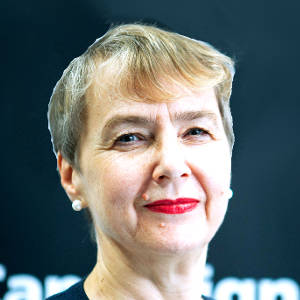Written by Kate Hudson
On the 1st March 1954, the US conducted a hydrogen bomb test at Bikini Atoll, in the Marshall Islands. Although earlier hydrogen bomb tests had been deeply shocking, it was this one that really shifted popular consciousness on the issue. The test was a 17-megaton blast with about 1,000 times the force of the bombs used on Japan. Although a radioactive danger zone had been identified in advance, in the event the explosion was hugely more powerful than anticipated and large quantities of radioactive fallout – white like snow – descended on four inhabited islands, including Rongelap, 100 miles from Bikini. The islanders, who were not evacuated for some days, suffered in the short term from various forms of radiation sickness and in the long term from very serious radiation-linked diseases.
The blast also caught the Lucky Dragon, a Japanese fishing boat 85 miles distant, in its radioactive fallout. The boat and the fishermen were heavily contaminated with radioactive fission products; all the men fell sick and one of them died. Given the distance of the boat from the explosion, the death and sickness that followed shocked many people. It became clear that the hydrogen bomb was extremely ‘dirty’, giving out large amounts of radioactive material. This realisation considerably fed opposition to hydrogen bomb testing, raising serious fears in people’s minds about the widespread health consequences of the tests. Subsequent data indicate that these fears were well founded with significant increases in cancer deaths beginning between 1947 and 1951.
As a result of huge popular concern, in April 1954, on the initiative of a number of Labour MPs including Anthony Wedgwood Benn, the Hydrogen Bomb National Campaign was set up. Local groups developed and a million signatures were collected on a petition calling for a top-level disarmament conference and reform of the UN. Similar demands put forward as a Labour Party resolution in the House of Commons had won 108 votes. Interviewed in 2003, Tony Benn remembered the origins of this campaign:
In March 1954 the United States tested the first hydrogen bomb on the Bikini Atoll in the Pacific and a number of Japanese fishermen working on their ship the Lucky Dragon were seriously burnt by the blast and radiation, even though it had occurred over 50 miles away. The bomb itself was 600 times more powerful than the atomic bombs dropped on Hiroshima and Nagasaki and the political shock waves went around the world, which led some of us to plan a campaign designed to bring about a summit meeting between the nuclear powers to end the threat that was posed.
Fenner Brockway, Sir Richard Acland, Tony Greenwood, George Thomas, who was later Speaker of the House of Commons and I, met to discuss how this could best be launched and we decided to book the Albert Hall for 30 April, at which we would make our Appeal for a National Petition…the meeting was held at what became the beginning of a six-month campaign for signatures which we presented on 31 December 1954 at No 10 Downing Street, where Churchill was still prime minister, and the debate within the party began to get under way.
This specific campaign was over by the end of the year, but popular opposition to testing continued to grow as the radiation risks from H-bomb testing became more widely understood and the testing programmes of the nuclear states expanded. By the end of 1958, around 307 nuclear tests had taken place, mostly in the atmosphere, conducted by the US, Soviet Union and the UK.
The decision to test the British H-bomb on Christmas Island in 1957 was ultimately the trigger for really serious organising and mobilisation, which resulted in the foundation of CND. In February 1957, the National Council for the Abolition of Nuclear Weapon Tests (NCANWT) was founded with Sheila Jones and Ianthe Carswell as joint secretaries. Dr Sheila Jones, herself a scientist, went on to help found CND. NCANWT pursued vigorous campaigning activities over the subsequent months, eventually bringing together the activities of over 100 local groups. Numerous eminent figures backed NCANWT as sponsors, including Benjamin Britten, EM Forster, Henry Moore and Michael Tippett, president of the Peace Pledge Union.
Opposition to the tests now came from many quarters. Following a request from the National Christian Council of Japan, the British Council of Churches condemned the tests and opposition MPs urged their postponement. The government’s position, however, expressed in a Defence White Paper in 1957, was that Britain’s only safeguard against nuclear attack was to be able to threaten retaliation. This notion of ‘deterrence’ – that you can deter attack by possessing nuclear weapons – remains British government policy to this day.
A number of pacifist activists now formed the Emergency Committee for Direct Action against Nuclear War and backed direct action against the tests. They included Bertrand Russell and Spike Milligan, and supported the Quakers Sheila and Harold Steele, who decided to sail a boat into the test area in an attempt to prevent the testing going ahead. Although they failed to achieve their destination, nevertheless they did attract worldwide publicity to the issue. As a consequence of this widespread concern, diverse organisation, and demand for government action, CND was born in February 1958.
